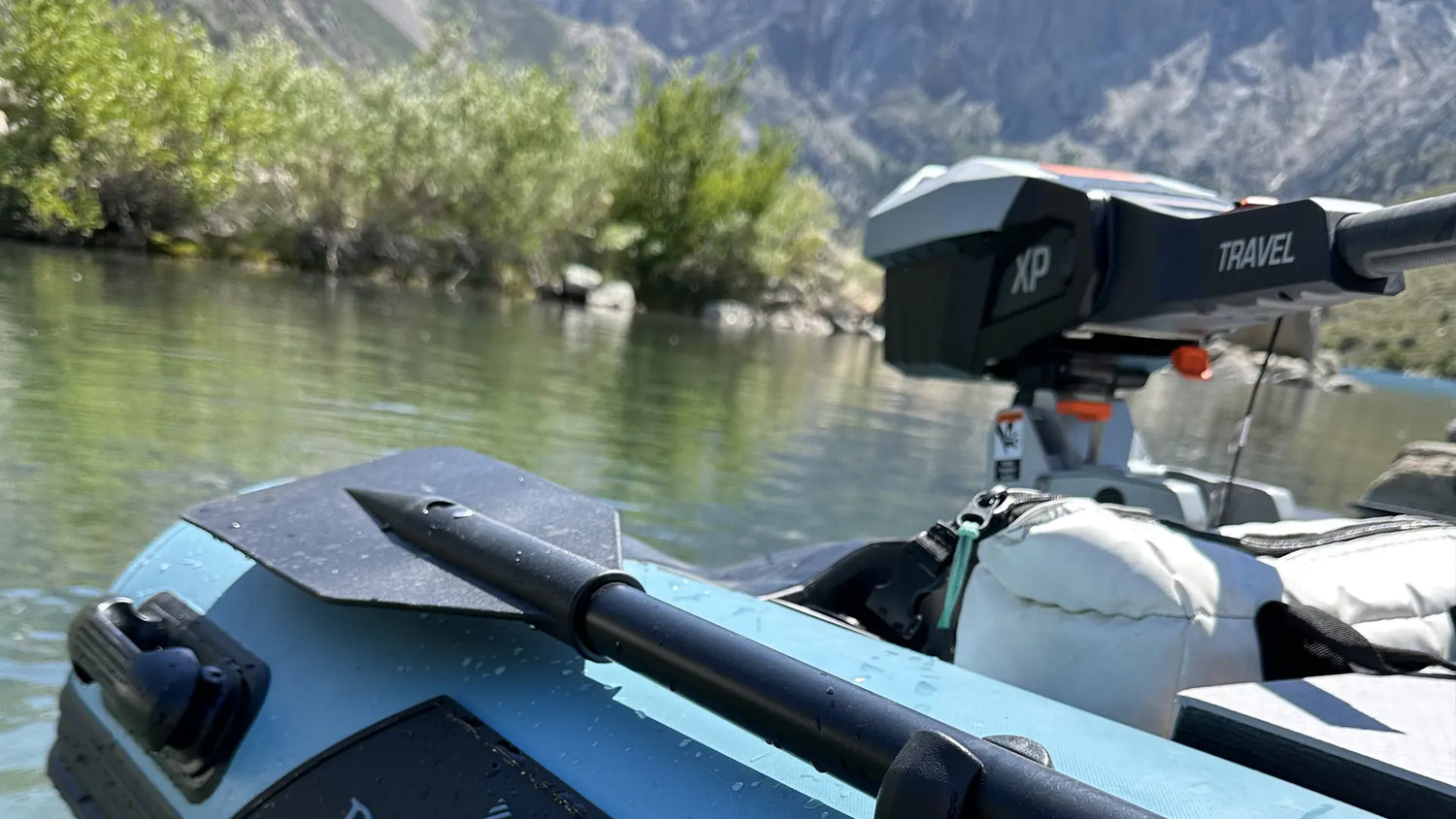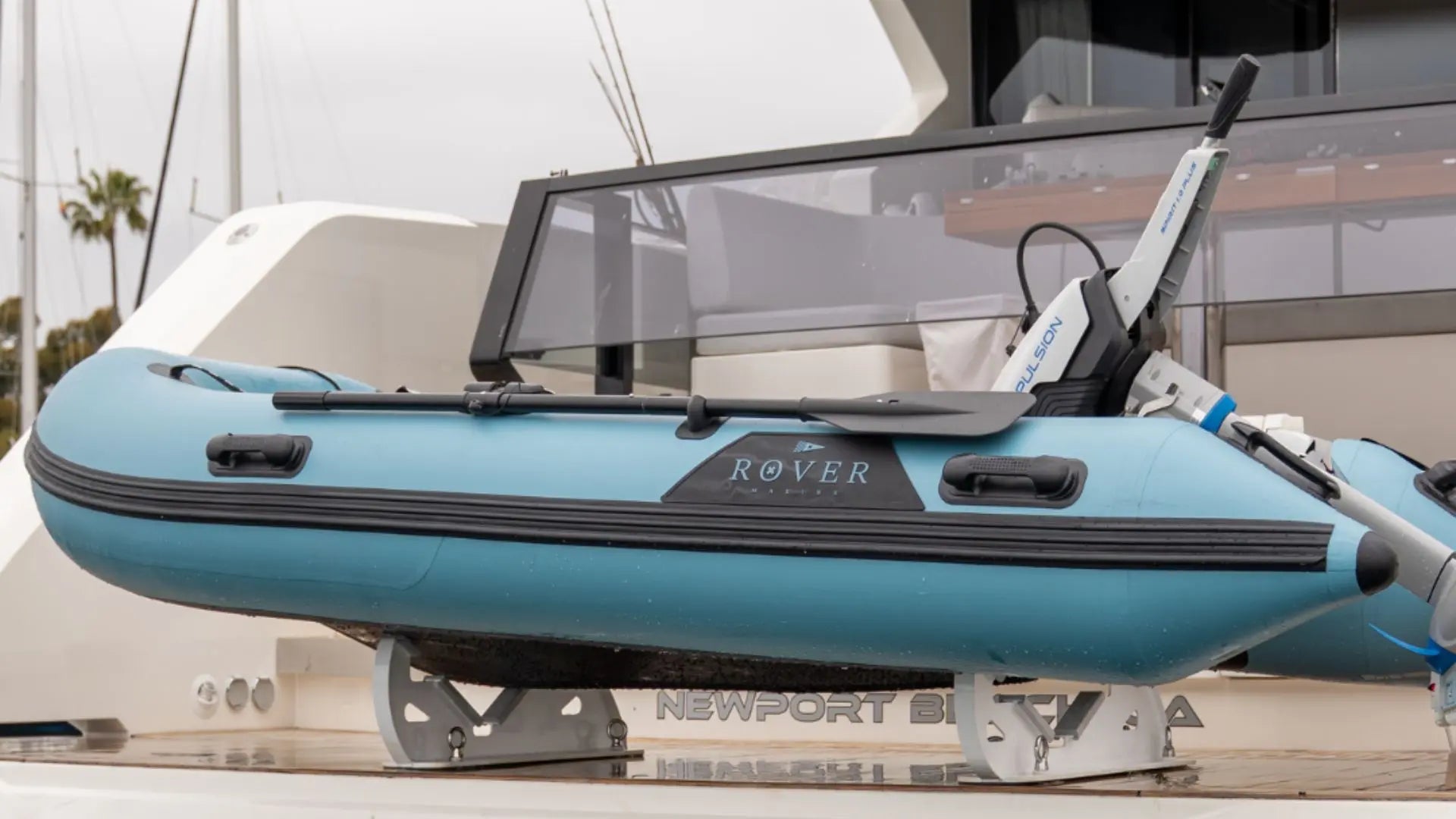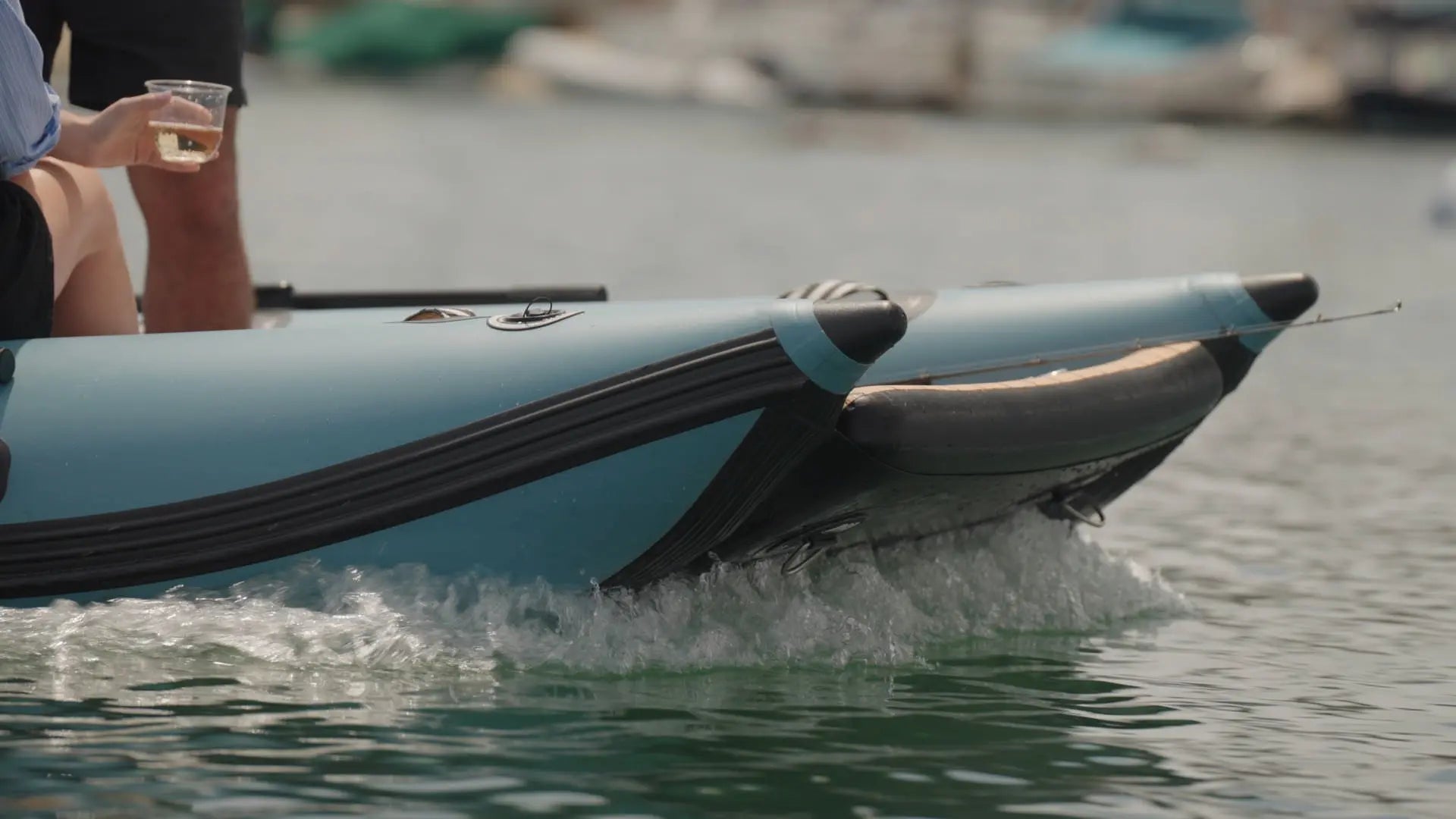Navigating the Waters: Your Essential Guide to Inflatable Dinghies and Outboard Motors
Selecting the perfect inflatable dinghy paired with an outboard motor can elevate your weekend excursions into smooth coastal voyages, offering a blend of effortless portability, user-friendly operation, and dependable power. This guide will equip you with the knowledge to choose the ideal dinghy type, find its perfect outboard match, maintain both for enduring performance, outfit your setup with crucial safety gear, and understand why Rover Marine’s Battle Boat, Battle Cat, ePropulsion Spirit 1.0 Plus, and Torqeedo Travel 1103 S packages are top-tier choices. We’ll cover:
- Understanding inflatable dinghies and their key differences
- How to select the right outboard motor and shaft length
- Best practices for maintenance, troubleshooting, and storage
- Essential accessories and safety recommendations
- The distinct advantages of Rover Marine’s inflatables and electric outboards
What Exactly Are Inflatable Dinghies and Their Primary Types?
An inflatable dinghy is a lightweight, easily transportable boat featuring air-filled tubes that provide buoyancy. This design makes them simple to store, launch, and retrieve, while also delivering stable performance for a variety of uses, from tenders to angling and leisure cruising.
What Sets an Inflatable Dinghy Apart?
Inflatable dinghies are constructed with air chambers integrated into tubes that are securely bonded to either a rigid or flexible floor. This creates a buoyant hull that’s resistant to punctures and offers consistent flotation. This construction method allows for quick inflation and deflation, facilitates shallow-water operation, and ensures convenient transport.
What Are the Main Categories of Inflatable Dinghies?
Dinghies are distinguished by their floor design and hull structure:
- Roll-Up: Features a soft, foldable deck wrapped in durable fabric, offering the ultimate in compact storage.
- Rigid Inflatable Boat (RIB): Boasts a solid fiberglass or aluminum hull beneath inflatable tubes, providing superior tracking and increased speed.
- Slatted Floor: Constructed with interlocking aluminum slats that form a robust, supportive deck once inflated.
Each type is tailored for different boating scenarios—whether you’re exploring calm bays with a RIB or making beach landings with a roll-up tender.
How Do Materials and Floor Types Influence a Dinghy’s Durability?
The lifespan of a dinghy is largely determined by its tube material. Hypalon offers excellent resistance to UV rays and chemicals, making it ideal for demanding use, while reinforced PVC provides a lighter option at a more accessible price point. Floor choices impact stiffness and weight capacity: slatted floors can handle heavier loads and more rugged use, whereas air-deck floors offer rigidity with minimal added weight.
What Size and Capacity Should You Opt For in an Inflatable Dinghy?
Choosing the right length and capacity depends on your specific boating needs. A 6–8 ft tender is perfect for ferrying kayaks or carrying light gear, while a 9–12 ft model can comfortably accommodate multiple passengers, diving equipment, or fishing gear. Capacity ratings are crucial for weight distribution—always factor in a safety buffer of at least 20% above the maximum load limit.
What Are the Distinctive Features of Rover Marine’s Battle Boat and Battle Cat Inflatable Catamarans?
Rover Marine’s Battle Boat is engineered with a deep-V foam floor and premium Hypalon tubes, ensuring excellent tracking and puncture resistance, with ample space for four adults. The Battle Cat Inflatable Catamaran stands out with its twin hulls for unparalleled stability, a robust rigid floor system, and integrated lifting points—making it the perfect choice for overnight adventures or specialized fishing trips.
How to Select the Ideal Outboard Motor for Your Inflatable Dinghy?
An outboard motor propels your dinghy by converting energy from fuel or a battery into thrust via a submerged propeller. This system allows for controlled speed and keeps the engine conveniently accessible above the transom for straightforward maintenance.
What Is an Outboard Motor and How Does It Function?
An outboard motor attaches to the stern of your boat. It utilizes either an internal combustion engine or an electric drive to rotate a propeller, pushing water backward and generating forward motion. This direct-drive setup simplifies installation, makes steering intuitive, and reduces maintenance complexity.
What Differentiates Electric from Gas Outboard Motors?
Electric outboards provide quiet, emission-free propulsion with immediate torque, making them ideal for environmentally sensitive areas and situations where noise reduction is paramount. Gas outboards offer greater range and quicker refueling but produce noise and exhaust fumes. Electric models are excellent for shorter excursions, while gas engines are better suited for extended cruising.
| Drive Type | Refueling/Charging | Runtime | Noise Level | Maintenance |
|---|---|---|---|---|
| Gasoline | Fuel station fill-up | Unlimited (with spare tanks) | Moderate to loud | Regular oil changes, spark plug replacements |
| Electric | Charging from a power source | 1–5 hours (depending on battery) | Virtually silent | Battery care, occasional motor checks |
The silent operation of electric propulsion enhances wildlife observation and promotes better neighborly conduct in marinas, though it requires mindful planning for charging intervals.
How Do Horsepower and Shaft Length Impact Dinghy Performance?
Horsepower dictates your dinghy’s top speed and its ability to carry heavier loads. A 2.5–5 HP motor is typically sufficient for 8–10 ft dinghies under normal conditions, while 8–15 HP is needed to power larger inflatables at higher speeds. Shaft length must correspond to your transom height—a short shaft (15″) is for lower mounts on smaller tenders, and a long shaft (20″) is for raised mounts and deep-V hulls—to ensure the propeller is optimally submerged and steering is responsive.
Which Electric Outboard Motors Are the Top Choices for Inflatable Boats?
Leading electric options such as the ePropulsion Spirit 1.0 Plus and Torqeedo Travel 1103 S are transforming inflatable boats into highly efficient tenders.
ePropulsion Spirit 1.0 Plus: Delivers 1 kW of continuous power, features an integrated battery management system for safe charging, and includes a convenient quick-release bracket.
Torqeedo Travel 1103 S: Offers 1.1 kW of thrust, boasts an integrated GPS display for real-time range estimation, and is designed for exceptional lightness.
Discover the full specifications for the “ePropulsion Spirit 1.0 Plus” electric outboard on the Rover Marine website.
What Are the Advantages of Using Portable Outboard Motors with Inflatable Dinghies?
Portable outboards typically weigh under 30 lb, fold compactly for easy storage, and simplify the rigging process for inflatables launched from trailers. Their detachable battery packs or fuel tanks allow for quick power source swaps at the dock, and their corrosion-resistant casings are built to withstand saltwater exposure, offering enhanced versatility for weekend adventurers.
Essential Maintenance and Troubleshooting Tips for Inflatable Dinghies and Outboard Motors
Proper care for both your dinghy and its motor is key to maintaining peak performance and ensuring safety, while also preventing costly repairs and minimizing downtime.
How Should You Maintain Your Inflatable Dinghy for Maximum Longevity?
Regularly rinse your dinghy with fresh water, and wipe down the Hypalon or PVC surfaces to remove any salt residue or UV-damaging contaminants. Inspect seams and valves for leaks, apply UV-resistant protectant sprays, and store the dinghy deflated in a cool, dry place away from direct sunlight to prevent material degradation.
What Are the Crucial Maintenance Steps for Electric and Gas Outboard Motors?
Electric motors require periodic checks of battery health, cleaning of terminals, and updates to controller firmware. Gas engines need the use of fuel stabilizers, regular spark plug inspections, replacement of lower-unit oil, and the application of corrosion inhibitor sprays to exposed metal components.
How Can You Effectively Troubleshoot Common Outboard Motor Issues?
Digital diagnostic systems can identify battery faults through indicator lights, while a flooded gas engine can often be restarted by cranking with the throttle fully open. If your motor struggles to shift into gear, check the steering linkage alignment and ensure there are no obstructions around the propeller. Persistent overheating typically indicates a worn impeller or clogged water intakes—inspect and replace impellers annually.
What Are the Best Practices for Storing Inflatable Dinghies and Outboards?
Partially deflate the tubes to reduce stress on the seams, and remove any detachable hardware before stowing in protective bags. For motors, run a freshwater flush, apply fogging oil to internal cylinders to prevent corrosion, disconnect batteries, and elevate the motor off the deck to guard against mildew and pests. Thorough off-season care will make spring commissioning much smoother.
Reach out to our marine specialists for personalized maintenance advice and to schedule service.
What Accessories and Safety Equipment Are Essential for Inflatable Dinghies and Outboard Motors?
Equipping your inflatable dinghy and its motor with the right tools and safety gear ensures a more convenient experience on the water and provides peace of mind for every outing.
Which Accessories Enhance Inflatable Dinghy Performance and Convenience?
Key accessories include high-capacity hand or electric pumps for rapid inflation, adjustable davits for effortless lift-on storage, and custom-fit covers to shield the tubes from damaging UV exposure. Portable mounting brackets simplify outboard attachment, while shock-absorbing paddles can reduce fatigue during manual operation.
What Safety Guidelines Should You Adhere to When Using Inflatable Dinghies?
Always carry U.S. Coast Guard-approved life jackets for every person on board, a waterproof VHF radio or personal locator beacon, and an emergency repair kit complete with adhesive patches. Familiarize yourself with local regulations regarding flares, sound signals, and navigation lights to ensure compliance and avoid potential fines.
How Do You Select Accessories That Are Compatible with Your Dinghy and Motor?
Ensuring compatibility involves matching the tube diameter, transom width, and mounting hole spacing. Consult your dinghy’s manual for specific bracket hole patterns and refer to the motor’s datasheet for clamp-on dimensions. When in doubt, confirm the fit with dealer-recommended, brand-matched options to prevent issues with mismatched hardware.
Why Should You Choose Rover Marine’s Inflatable Dinghies and Electric Outboard Motors?
Rover Marine offers a cohesive selection of premium inflatable boats and environmentally conscious propulsion systems, all designed with durability, ease of use, and ecological responsibility in mind.
What Makes Rover Marine’s Electric Outboards Both Eco-Friendly and Quiet?
By eliminating combustion emissions and utilizing sealed brushless motors to significantly reduce noise, Rover Marine’s “Torqeedo Travel 1103 S essential package” actively protects waterways and enhances opportunities for wildlife observation. Their regenerative charging systems capture excess kinetic energy during deceleration, extending your time on the water.
How Do Rover Marine’s Inflatable Boats Differentiate Themselves in Design and Durability?
Rover Marine employs high-frequency welding for superior tube integrity with Hypalon, reinforced keel guards for enhanced abrasion resistance, and ergonomically designed lifting handles. Integrated anti-UV coatings and dual-layer fabric construction result in inflatables that offer exceptional resistance to punctures and aging, far surpassing conventional tenders.
What Features and Benefits Does the ePropulsion Spirit 1.0 Plus Offer?
The ePropulsion Spirit 1.0 Plus integrates a 1 kW motor, a 48 V lithium battery pack providing up to 1 hour of runtime at full throttle, and an intuitive throttle with integrated display. Its quick-release mounting bracket simplifies transitions between vessels and makes onshore storage effortless.
Discover more about the “ePropulsion Spirit 1.0 Plus electric outboard” on our dedicated product page.
What Is Included in the Torqeedo Travel 1103 S Essential Package?
This comprehensive package includes the 1103 S motor, a fully waterproof battery, a charger, an extended tiller handle, and a specially designed carry case. The onboard range computer, GPS-assisted speed estimation, and included warranty protection provide confidence for every journey.
How Can Customers Access Support and Expert Advice from Rover Marine?
For detailed guidance on selecting, installing, and maintaining your dinghy and motor, please visit our Contact Us page or call our certified marine specialists. We offer personalized consultations to help you find the perfect product combination that aligns with your boating lifestyle.
What Are the Most Common Questions About Inflatable Dinghies and Outboard Motors?
Boat owners frequently seek clarification on engine sizing, performance expectations, and the criteria for selecting motors for inflatable vessels. Key insights include the recommended horsepower for 10 ft tenders (2.5–5 HP for balanced performance), the anticipated speeds of 3–5 knots with a 2.5 HP motor under moderate load, and the leading electric models—the ePropulsion Spirit 1.0 Plus and Torqeedo Travel 1103 S—for quiet, emission-free cruising. Your choice should be based on boat length, desired speed, battery life or fuel range, and ease of transport. Regular battery checks, impeller inspections, and reviews of tube integrity are fundamental to effective outboard motor maintenance.
Rover Marine’s extensive product range—from the robust slatted-floor Battle Boat inflatables to the exceptionally quiet electric outboards—empowers boating enthusiasts to explore waterways responsibly and reliably. Whether your passion is fishing, diving, or simply enjoying a peaceful sunset cruise, selecting the right dinghy and motor combination guarantees years of effortless enjoyment. Browse our complete product selection or connect with our experts today to craft your ideal boating setup.





